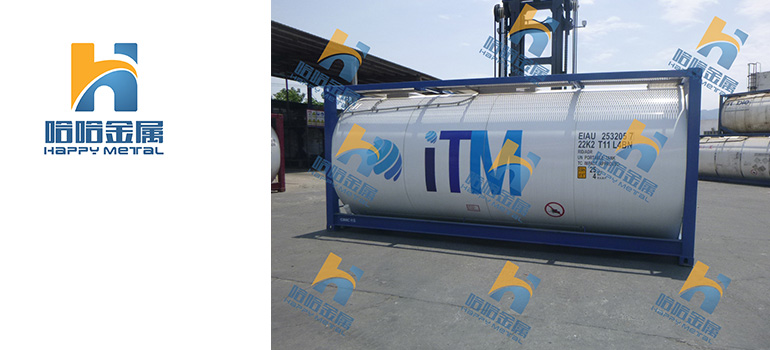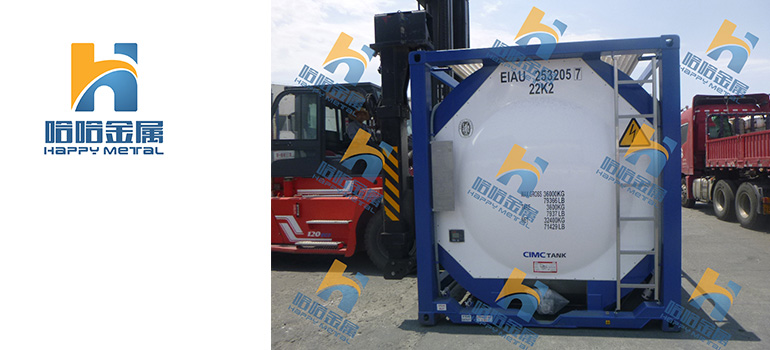Summary:
Sodium Methylate Solution and the Environment: A Comprehensive Analysis
Understanding Sodium Methylate Solution Composition
Production Process and Industrial Usage
Significance of Sodium Methylate in Chemical Industry
Evaluating Water Quality and Aquatic Ecosystems
Sodium Methylate Solution, a chemical compound consisting of sodium methoxide dissolved in methanol, plays a pivotal role in various industrial processes, particularly in the realm of organic synthesis and biodiesel production. At its core, this solution embodies the fusion of sodium hydroxide with methanol, resulting in a potent catalyst with wide-ranging applications.
Understanding Sodium Methylate Solution Composition

Sodium Methylate Solution, a fundamental chemical entity, derives its catalytic potential from a meticulously balanced composition. Within its molecular framework, sodium methoxide, an alkoxide compound, harmonizes with the solvent methanol to form a solution with profound reactivity and selectivity.
Sodium Methoxide: The Active Species
At the heart of Sodium Methylate Solution lies sodium methoxide, a potent alkoxide compound renowned for its nucleophilic properties. Comprising sodium ions (Na⁺) and methoxide ions (CH₃O⁻), this species epitomizes the catalytic prowess of the solution. The sodium ion, with its positive charge, stabilizes the methoxide ion, enhancing its nucleophilicity and enabling it to participate in a myriad of chemical transformations.
Methanol: The Solvent Matrix
Surrounding and supporting the sodium methoxide species is the solvent methanol (CH₃OH). Beyond providing a medium for chemical reactions, methanol serves as a vital component in the solvation of sodium methoxide, ensuring its stability and facilitating its interactions with other reactants. Moreover, methanol’s polar nature enhances the solution’s overall reactivity, amplifying its catalytic efficacy.
Balance and Stability
The synergy between sodium methoxide and methanol within Sodium Methylate Solution is delicately poised, ensuring optimal catalytic activity while maintaining solution stability. This equilibrium is essential for achieving consistent and reproducible results in chemical processes employing Sodium Methylate Solution as a catalyst.
Implications for Reactivity
Understanding the composition of Sodium Methylate Solution offers profound insights into its reactivity and selectivity in various chemical reactions. The interplay between sodium ions, methoxide ions, and the solvent matrix governs the solution’s behavior, dictating its ability to initiate and drive transformative processes in organic synthesis and biodiesel production.
In unraveling the composition of Sodium Methylate Solution, we gain a deeper appreciation for its catalytic capabilities and chemical significance. The harmonious interplay between sodium methoxide and methanol underscores the solution’s pivotal role in advancing synthetic chemistry and sustainable manufacturing practices. As we continue to explore its composition and applications, Sodium Methylate Solution emerges as a cornerstone of innovation and progress in the modern chemical landscape.
Production Process and Industrial Usage
The production process of Sodium Methylate Solution is a meticulously controlled synthesis, ensuring the precise formation of this catalytic powerhouse. Once synthesized, its industrial applications span a wide spectrum of sectors, each leveraging its unique properties for various purposes.
Synthesis of Sodium Methylate Solution
The production of Sodium Methylate Solution typically begins with the controlled reaction between sodium hydroxide (NaOH) and methanol (CH₃OH). This reaction, often conducted in carefully monitored conditions, yields sodium methoxide (NaOCH₃) dissolved in methanol. The stoichiometry and reaction conditions are critical to achieving high purity and optimal reactivity of the resulting solution.
Industrial Applications in Organic Synthesis
Sodium Methylate Solution serves as a versatile catalyst in organic synthesis, facilitating a myriad of chemical transformations. Its strong nucleophilic nature makes it particularly valuable in reactions such as transesterification, where it catalyzes the conversion of triglycerides into biodiesel. Additionally, it finds application in the synthesis of pharmaceuticals, agrochemicals, and specialty chemicals, enabling efficient and selective bond formation.
Role in Biodiesel Production
One of the most significant industrial applications of Sodium Methylate Solution is in the production of biodiesel. As a catalyst in the transesterification process, it facilitates the conversion of vegetable oils or animal fats into biodiesel and glycerol. This sustainable alternative to traditional diesel fuel holds promise for reducing greenhouse gas emissions and promoting energy independence.
Catalyst in Petrochemical Industry
Beyond its applications in renewable energy and organic synthesis, Sodium Methylate Solution plays a crucial role in the petrochemical industry. It is employed in the production of various petrochemical derivatives, serving as a catalyst in reactions such as esterification and methylation. Its use contributes to the synthesis of a wide range of products, including surfactants, lubricants, and plasticizers.
The production and industrial usage of Sodium Methylate Solution exemplify its indispensable role in modern chemistry and manufacturing. From catalyzing organic transformations to driving sustainable energy initiatives, its versatility and efficacy make it a cornerstone of innovation across diverse industries. As we continue to explore novel applications and refine production processes, Sodium Methylate Solution remains poised to shape the future of chemical synthesis and industrial sustainability.
Significance of Sodium Methylate in Chemical Industry
Sodium Methylate, as a catalyst and reagent, holds profound significance within the chemical industry, driving innovation and enabling transformative processes across various domains.
Catalytic Powerhouse
At the forefront of its significance lies Sodium Methylate’s catalytic prowess. As a strong base and nucleophile, it catalyzes a wide array of chemical reactions with exceptional efficiency and selectivity. Its ability to initiate and accelerate reactions, such as transesterification and methylation, makes it indispensable in organic synthesis and manufacturing processes.
Facilitator of Sustainable Practices
In an era marked by environmental consciousness, Sodium Methylate emerges as a champion of sustainability within the chemical industry. Its role as a catalyst in biodiesel production exemplifies its contribution to renewable energy initiatives, facilitating the transformation of vegetable oils and animal fats into eco-friendly fuel alternatives. By promoting the use of renewable resources and reducing dependence on fossil fuels, Sodium Methylate drives progress towards a greener future.
Versatile Reagent in Organic Synthesis
Beyond its application in biodiesel production, Sodium Methylate finds widespread use as a versatile reagent in organic synthesis. Its ability to initiate nucleophilic substitution, deprotonation, and condensation reactions enables the synthesis of pharmaceuticals, agrochemicals, and specialty chemicals. Its compatibility with a diverse range of substrates and its high reactivity make it a preferred choice for chemists seeking efficient and cost-effective synthetic routes.
Enabler of Process Intensification
In the quest for process optimization and efficiency, Sodium Methylate plays a pivotal role in process intensification strategies within the chemical industry. Its use as a catalyst allows for the development of streamlined synthetic routes, reducing reaction times, energy consumption, and waste generation. By promoting sustainable manufacturing practices and minimizing environmental impact, Sodium Methylate drives continual improvement in chemical processes and industrial operations.
In summary, the significance of Sodium Methylate in the chemical industry transcends its role as a mere catalyst or reagent. It embodies the principles of sustainability, innovation, and efficiency, shaping the landscape of modern chemistry and manufacturing. As we continue to harness its catalytic potential and explore new applications, Sodium Methylate remains poised to drive progress and inspire transformative change in the pursuit of a more sustainable and prosperous future.
Environmental Impact Assessment
Assessing the environmental impact of Sodium Methylate Solution is paramount in understanding its implications on ecosystems, human health, and sustainability. Through comprehensive evaluation, we can discern the potential risks and devise strategies to mitigate adverse effects.
Evaluating Water Quality and Aquatic Ecosystems
One critical aspect of environmental impact assessment is the examination of Sodium Methylate’s influence on water quality and aquatic ecosystems. Discharges or spills of Sodium Methylate Solution into water bodies can lead to chemical contamination, affecting aquatic organisms and ecosystem dynamics. Assessing the persistence, toxicity, and bioaccumulation potential of Sodium Methylate in aquatic environments is essential for safeguarding water resources and biodiversity.
Impact on Water Quality: Analyzing the Chemical Fate and Transport of Sodium Methylate in Aquatic Systems
Ecological Consequences: Assessing the Effects of Sodium Methylate Exposure on Aquatic Organisms and Food Webs
Remediation Strategies: Exploring Techniques for Mitigating Sodium Methylate Contamination in Water Environments
Soil Contamination and Remediation Strategies
Another critical aspect of environmental impact assessment involves evaluating the potential for soil contamination by Sodium Methylate Solution and implementing remediation measures. Accidental spills or improper disposal practices can result in soil pollution, posing risks to terrestrial ecosystems, agricultural productivity, and human health. Understanding the mechanisms of soil sorption, leaching potential, and degradation pathways of Sodium Methylate is essential for devising effective remediation strategies.
Soil Sorption Dynamics: Investigating the Adsorption and Desorption Behavior of Sodium Methylate in Soil Matrices
Leaching Potential: Assessing the Risk of Sodium Methylate Migration into Groundwater and Surface Water Bodies
Remediation Techniques: Exploring Soil Remediation Technologies to Address Sodium Methylate Contamination and Restore Soil Health
Air Pollution and Atmospheric Effects
In addition to water and soil, the assessment of Sodium Methylate Solution’s environmental impact extends to air quality and atmospheric effects. During production, handling, and transportation processes, the release of volatile organic compounds (VOCs) and particulate matter can contribute to air pollution and pose respiratory hazards to nearby populations. Quantifying emissions, modeling dispersion patterns, and implementing emission control measures are essential steps in mitigating air pollution from Sodium Methylate-related activities.
Emission Sources and Pathways: Identifying Sources of Air Pollution Associated with Sodium Methylate Solution
Dispersion Modeling: Predicting the Spatial Distribution and Concentrations of Sodium Methylate Emissions in Ambient Air
Air Quality Management: Implementing Measures to Minimize Emissions and Protect Public Health from Sodium Methylate-Related Air Pollution
In conclusion, conducting a thorough environmental impact assessment of Sodium Methylate Solution is crucial for understanding its effects on aquatic ecosystems, soil quality, air pollution, and overall environmental health. By identifying potential risks and implementing proactive measures, we can strive to minimize adverse impacts and promote sustainable use of Sodium Methylate in industrial and manufacturing processes.




